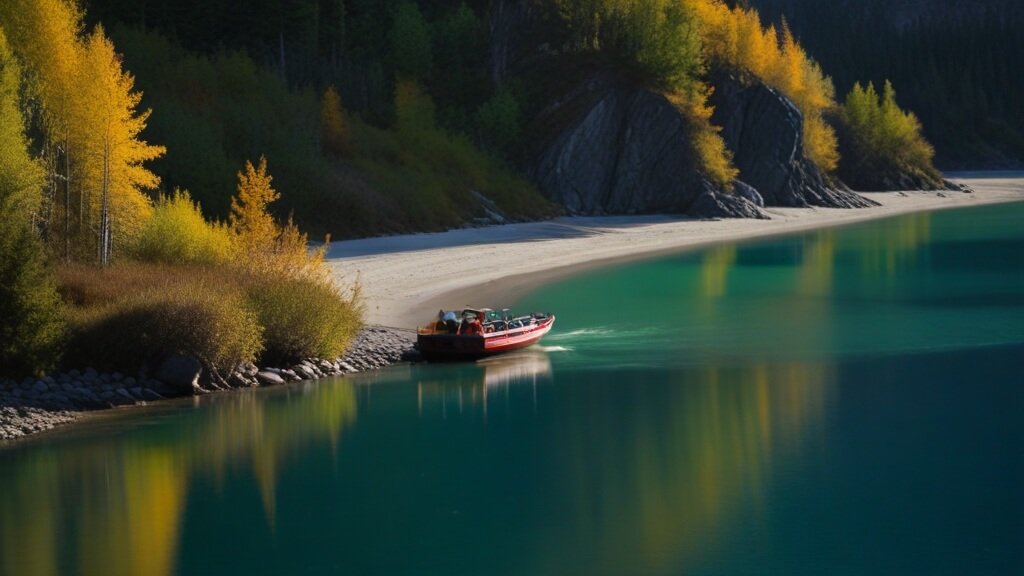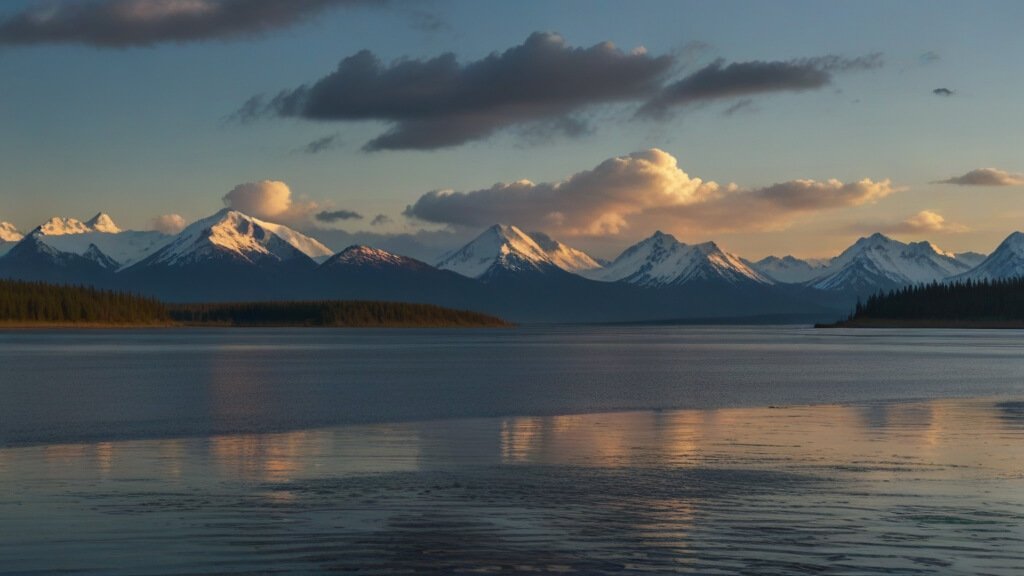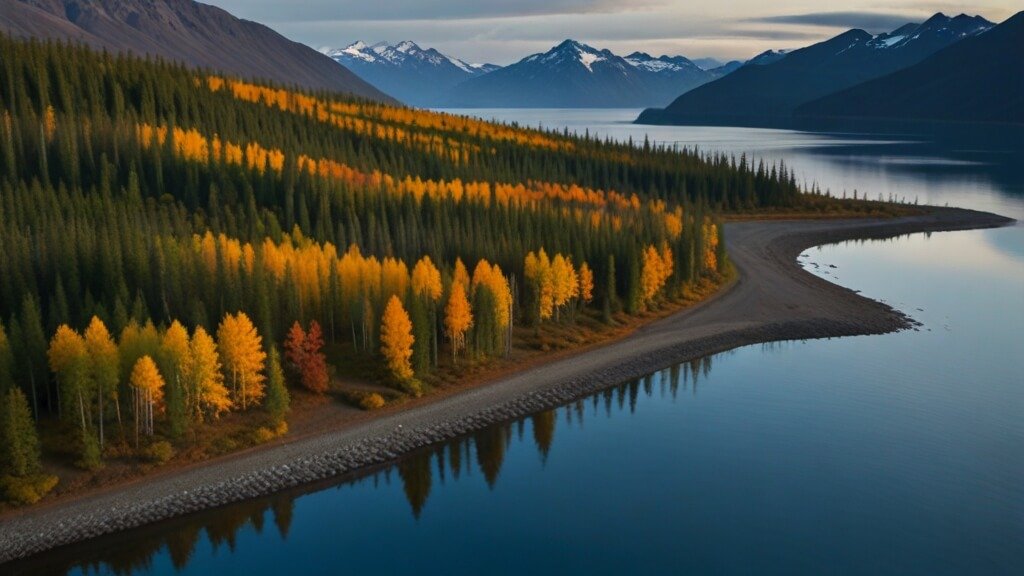Alaska, the Last Frontier, beckons adventurers with its rugged landscapes, pristine wilderness, and abundant wildlife. Whether you’re dreaming of witnessing the Northern Lights, exploring glaciers, or encountering grizzly bears, choosing the right time to visit is crucial. What is the best month to see Alaska? In this comprehensive guide, we’ll delve into the best months to experience Alaska’s natural wonders, along with estimated costs and key takeaways.
Key Takeaways of What is the best month to see Alaska?
Before we dive into the details, let’s summarize the main points:
- June and July offer the best weather, extended daylight hours, and a plethora of activities.
- May and September are budget-friendly months with fewer crowds.
- Late August and September are ideal for fall foliage and Northern Lights enthusiasts.
Now, let’s explore each month in more depth.
Month-by-Month Guide
1. May and September: Shoulder Season
May: Spring Awakening
- Weather:
- May marks the transition from winter to summer in Alaska.
- On average, temperatures range from an average low of 40°F to an average high of 55°F.
- Coastal regions (like Southcentral and Southeast) boast the warmest temperatures, with lows around 40°F and highs around 55°F.
- The Interior falls in the middle weather-wise, with temperatures ranging between 30°F and 55°F.
- In the Arctic, expect the coldest temperatures during May, around 15°F to 24°F.
- May has the least amount of precipitation, although late-season snow or rain is still possible.
- Daylight Hours:
- May offers extended daylight hours, allowing for more exploration.
- Enjoy the long, bright days of the Alaskan spring.
- Things to Do:
- Wildflowers: Witness spring blooms adorning landscapes.
- Outdoor Adventures: Explore hiking trails, bike paths, and national parks.
- Wildlife: Spot migrating birds and other wildlife.
- What to Pack:
- Layer your clothing for fluctuating temperatures.
- Bring a rain jacket and waterproof footwear.
- Don’t forget your sunglasses to enjoy the bright Alaskan days.
September: Autumn Tranquility
- Weather:
- September brings cooler temperatures, especially in northern regions.
- Days are still pleasant, and evenings are crisp.
- Coastal areas experience average lows around 40°F and highs around 55°F.
- The Interior maintains temperatures between 30°F and 55°F.
- Arctic regions remain chilly, with temperatures around 15°F to 24°F.
- Daylight Hours:
- Although daylight hours decrease compared to summer, September still provides ample time for exploration.
- Things to Do:
- Fall Foliage: Witness vibrant autumn colors as leaves change.
- Harvest Season: Visit vineyards, orchards, and farmers’ markets.
- Northern Lights: Some regions offer a chance to see the aurora borealis.
- What to Pack:
- Dress in layers for varying temperatures.
- Pack warm clothing for cooler evenings.
- Capture the beauty of fall with your camera.
Remember, the shoulder seasons in Alaska offer a balance of good weather, fewer crowds, and unique experiences. Whether you choose May or September, you’re in for an unforgettable Alaskan adventure! 🌸🍂🏔️
2. June and July: Peak Summer Months
June: The Height of Summer
- Weather:
- June marks the beginning of summer in Alaska.
- Average temperatures during June range from the high 50s to low 70s Fahrenheit (around 14-23 degrees Celsius).
- These comfortable conditions provide an ideal backdrop for outdoor activities.
- Daylight Hours:
- June 21 is the longest day of the year in Alaska.
- Anchorage enjoys approximately 19 hours of daylight, while Southeast Alaska gets around 18 hours, and Fairbanks basks in a whopping 22 hours of daylight.
- It’s light outside almost all night long from late May to late July, allowing you to pack in a lot of activities under the Midnight Sun!
- Things to Do:
- Day Tours: June is perfect for day tours. Explore glaciers, wildlife, and stunning landscapes.
- Salmon Return: Witness the incredible salmon run as these fish return to their spawning grounds.
- Outdoor Adventures: Hiking, kayaking, and glacier walks are popular.
- Wildlife Viewing: June offers excellent opportunities to see bears, moose, eagles, and other wildlife.
- What to Pack:
- Dress in layers to adapt to changing temperatures.
- Bring comfortable hiking shoes and sunglasses.
- Don’t forget your camera to capture the breathtaking scenery.
July: Alive with Energy
- Weather:
- July continues the warm trend, with temperatures similar to June.
- Expect daytime highs to average around 60 degrees Fahrenheit (15-16 degrees Celsius).
- Nights remain refreshingly cool, dipping into the 40s and 50s.
- Daylight Hours:
- July maintains the extended daylight hours, allowing for more exploration.
- Enjoy the energy of summer as you make the most of the long days.
- Things to Do:
- Glacier Cruises: Take a boat tour to witness massive glaciers calving into the sea.
- Whale Watching: Humpback whales are abundant during July.
- Fishing: Salmon fishing is at its peak.
- Festivals and Events: July hosts various cultural events, music festivals, and local celebrations.
- What to Pack:
- Pack layers for varying temperatures.
- Bring rain gear, as July sees occasional showers.
- Binoculars are handy for wildlife spotting.
June and July are Alaska’s liveliest months, offering a perfect blend of warm weather, outdoor adventures, and natural wonders. Whether you’re exploring Denali National Park, cruising along the Inside Passage, or hiking through pristine wilderness, these months showcase the best of the Last Frontier! 🏔️🌞🐋
3. Late August and September: Fall Colors and Northern Lights
Fall Colors in Alaska
- Late August and September bring a wash of colors to the landscape, not only across the foliage but also in the night sky as aurora season kicks off.
- Here’s what you can expect during this enchanting time:
1. Fall Foliage
- Alaska’s fall colors are unique and captivating. While most trees in the Lower 48 turn red, in Alaska, they predominantly turn yellow and orange.
- The tundra, however, steals the show. It can glow bright red, creating a stunning contrast against the evergreen landscape.
- If you’re a photographer, consider joining a fall foliage photo tour to capture these vibrant hues.
- By the second week of September, you’ll wake up to see the mountain tops coated in white snow, while the forest below still glows in red and orange—a breathtaking sight!
- Locals affectionately call these early snows “Termination Dust,” signaling the end of summer and the arrival of winter.
2. Northern Lights (Aurora Borealis)
- September marks the beginning of the aurora borealis season in Alaska.
- Away from city lights, you have a chance to witness the dancing curtains of green, purple, and pink in the night sky.
- Kluane Lake in the Yukon is a spectacular place to view the northern lights under the vast night sky.
- Keep an eye out for the annual Dark Sky Festival held at Kathleen Lake Campground in mid-September.
- Remember that September can be a bit rainy and cool, but it’s also a time of dramatic transformation and natural wonders.
Termination Dust and Changing Demographics
- As September progresses, the days become shorter. However, there’s still more daylight than many places in the U.S. see during this time of year.
- Early September feels like Alaska summer, with temperatures in the high 50s to 60s (maybe even 70s) and about 14 hours of light every day.
- By the end of the month, temperatures drop by about 10 degrees, and daylight slips away. The sun rises later (around 8 a.m.) and sets earlier (around 7:30 p.m.).
- Labor Day doesn’t mark the end of tourist crowds in Alaska. Cruise ships continue to dock, but the demographics change—a few more families with small kids as older kids head back to school.
September in Alaska is indeed a gamble, but it can be divine. Whether you’re marveling at fall colors, chasing the northern lights, or witnessing the first snow, this month offers a unique blend of natural beauty and adventure! 🍂🌌🏔️
Statistics: Last Five Years
Here’s a glimpse of the number of travelers visiting Alaska over the past five years:
| Year | Travelers Incoming |
|---|---|
| 2019 | 2.5 million |
| 2020 | 1.8 million |
| 2021 | 2.2 million |
| 2022 | 2.4 million |
| 2023 | 2.6 million |




